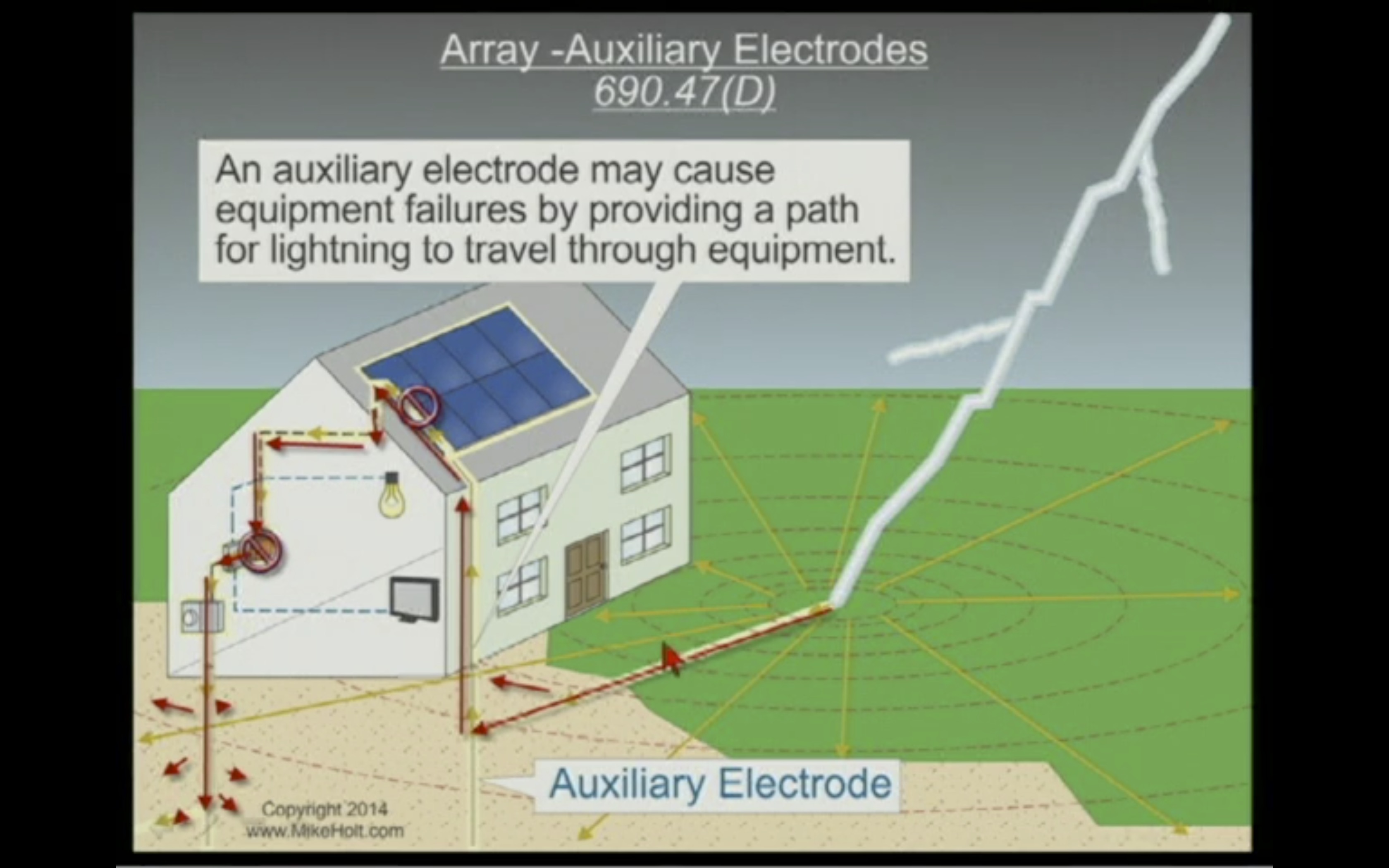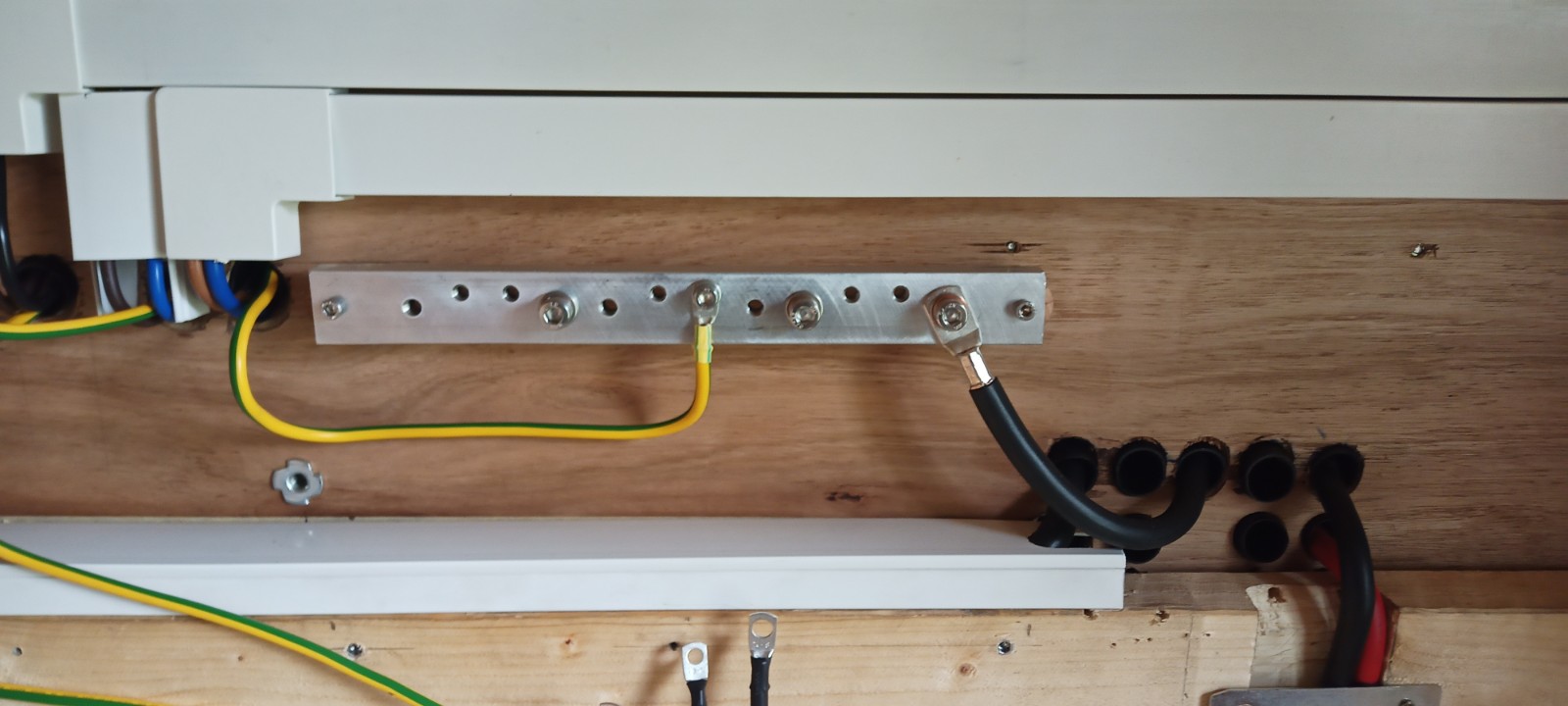We all know that a good grounding for a small group of units yields for units and components bonded at just one main ground rod.
My concern is that if I connect the Multiplus AC in it will automatically join the inverter Neutral/case ground to that of the incoming AC practically connecting two different ground points (house rod and solar shed rod) at a given distance which is wrong.
I have already separated the PV ground mount from the solar energy building precisely for that very reason.
How do installers resolve this problem is my question but most importantly what can I do to avoid dual grounding rods?

 It IS important that all safety grounds in a facility be connected together so that any fault currents can flow to the ground-neutral bonding point and trip breakers. Your PV frame SHOULD be connected to other safety grounds, not isolated from them.
It IS important that all safety grounds in a facility be connected together so that any fault currents can flow to the ground-neutral bonding point and trip breakers. Your PV frame SHOULD be connected to other safety grounds, not isolated from them. Going back to my initial concern, if I then connect the grid assist cable to the inverter I would then have a ground rod coming from the house 35m away which is not bonded to the rest of the below-ground items if not for the external conductor itself.
Going back to my initial concern, if I then connect the grid assist cable to the inverter I would then have a ground rod coming from the house 35m away which is not bonded to the rest of the below-ground items if not for the external conductor itself.

